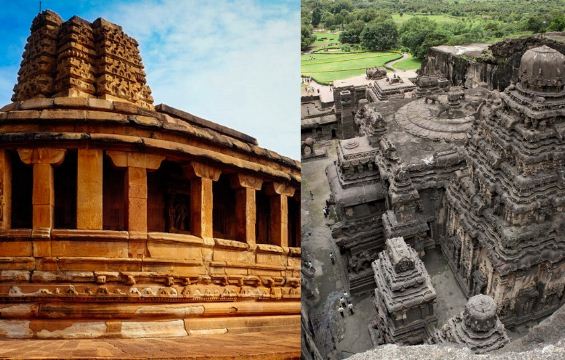The school history books currently in circulation across the country are replete with innumerable botched stories regarding the rich history of Bharat. We’ve got full chapters dedicated to smaller and insignificant dynasties of Delhi like Lodhis and Mamluks (Razia Sultana) but are not taught more than a few lines about the Ahoms, The Odiyas-Kalingans, the Nagas, the Chalukyas, The Cholas, The Cheras, the Vangas, The Khasis, Pandyas, Pallavas, Marathas, The Vijaynagar Empire, The Sikh Empire, The Karkotas of Kashmir, Kanishka, Suhaldev and many others.
Freedom fighters who died giving their lives for the motherland are reduced to caricaturist figures while the likes of cruel, blood-hungry rulers like Tipu Sultan and Aurangzeb are glorified as the apostle of patriotism.
The Indian historians have seemingly interpreted the History of India as the History of Delhi and have primarily focused on how invaders came in and took our pants down. Unlike the Mughals who ruled for 200-300 odd years, several previous Indian kingdoms had their reign far outlasting the Mughals.
Pallava dynasty
The origin of the Pallava dynasty is still a mystery and probably the first ruler of this dynasty came to power mid of third century A.D. However, it is believed that Pallavas ruled for about 500 years until Tondaimandalam was captured by the Cholas. The present-day city of Kanchipuram was the capital of the Pallava empire.
The Pallavas ruled in Mysore, Karnataka, and southern India (incorporating the modern regions of Andhra Pradesh, northern Tamil Nadu, and parts of southern Karnataka).
Moreover, unlike the Mughals who were concentrated in tiny pockets up North, the Pallavas conquered vast areas of the sub-continent, expanding across much of it into what is now Afghanistan during the reigns of Dharmapala and Devapala.
The Chalukyas and its sub-dynasties
Meanwhile, the Chalukyas ruled parts of Southern and Central India between the 6th century and the 12th century. Their capital was situated at Vatapi which is modern Badami in the state of Karnataka. Badami Chalukyas, Eastern Chalukyas and Western Chalukyas were all part of the Chalukya dynasty and ruled during different time periods. However, most Indians will be oblivious to this fact.
The dynasty reached the pinnacle of its powers during the reign of Pulakesin II. He conquered almost entire south-central India. Pulakesin II is famous for stopping Northern king Harsha in his tracks while he was trying to conquer southern parts of the country.
The Chalukyas were great administrators and had an impressive maritime power. Sanskrit along with the local languages thrived. An inscription dated the 7th century mentions Sanskrit as the language of the elite whereas Kannada was the language of the masses.
The Rashtrakuta dynasty
Last but not the least, Dantivarman or Dantidurga defeated the last Chalukya ruler of Batapi, Kirtivarman II, and founded the Rashtrakuta Dynasty. He is said to have conquered Kalinga, Kosala, Kanchi, Srisril, Malava, Lata, etc., and occupied Maharashtra.
Later, Amoghavarsha I – regarded as the greatest Rashtrakuta king set up a new capital at Manyakheta with Broach becoming one of the major ports of his reign. Commerce with the Arabs flourished during this period. Such was the stature of Amoghavarsha that Suleman, an Arab merchant, in his account called him as one of the four greatest kings of the world.
The architecture and contribution to GDP of ancient Indian kingdoms
While liberal historians sing ballads of praise about the Mughal architecture, they conveniently forget that the world-famous relic of Mahabalipuram and the ancient centre of learning, Kanchipuram was built by the Pallavas while the pioneering cave temples and complexes of Badami and Aihole-Pattadakallu depict the Chalukyan architecture.
In a classic case of half-cooked, half-baked, page three paparazzi type propaganda, the main claim surrounding Mughals’ ‘’Rich Legacy’’ is that at the time of Aurangzeb (one of the most brutal plunderer and genocidal kings of Mughals), Indian GDP constituted about 25 percent of the world GDP. The data has been compiled by economic historian Angus Maddison.
However, digging deep into GDP data of the last 2000 years narrates a different story. Comparing Indian GDP before and after the Mughal era makes it crystal clear that Mughals stagnated the Indian economy.
The chart clearly shows that India’s share in world GDP was hovering between 40-45 percentages of the world’s GDP from 1AD to up until 1150 AD, at the time when India was ruled mainly by native dynasties like Chalukyas and Rashtrakutas.
This chart that I have taken from Jeff Desjardins’ essay “2,000 Years of Economic History in One Chart” puts data into the correct perspective. pic.twitter.com/e5nFi2PUSk
— Atul Kumar Mishra (@TheAtulMishra) August 31, 2021
Read More: Busting the myth of India’s high GDP share during the Mughal era
History books and correction
As reported by TFI, after years of incessant demands from the general public asking the central government to rewrite the History books using authentic sources and evidence without adulterating them with the propaganda of some ill-motivated individuals, the centre had finally started the long-overdue exercise.
The GoI, last year, invited suggestions via email from the public for removing distortions in Indian History from the school textbooks. Students, teachers, domain experts, or anyone having cogent knowledge about any particular subject of Indian history were invited to submit their work in English or Hindi.
Read More: You wanted the Indian History to be re-written. Well, the government wants you to rewrite it
Mughals’ reality has always been hidden from Indian masses through Bollywood propaganda movies like Mughal-e-Azam, Jodha Akbar, etc., further aided by the liberal intelligentsia of the country. It’s time that we recognize our true ancestors and pay homage to their contributions.






























I do agree with this post and it’s views. The history must be rewritten with real facts and real historical heroes with their contribution to build the golden days of our BHARAT…